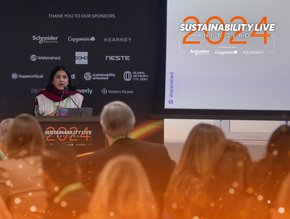The first ever blockchain solution for the US crude oil market has been created

The first ever blockchain solution for the US crude oil market has been introduced, pioneered by Natixis, IBM, and Trafigura.
The distributed ledger platform, built on the Linux Foundation open source Hyperledger Fabric, allows major steps in a crude oil transaction to be digitised on the blockchain, ensuring improved transparency, enhanced security, and optimised efficiency.
Having all parties on the same ledger will mean that they can each view and share data simultaneously, from the time a new trade is confirmed and validated, to when the crude oil is inspected, to its final delivery. The system will contribute hugely to improving efficiency, visibility, and transparency whilst lowering costs and potential for cybercrime.
The crude oil industry is not well known for its modernity, but this platform is set to change that. Up until now, documentation has generally involved complicated paper trails using outdated technologies; this new digital solution will be hosted on IBM’s cloud platform, Bluemix, led and delivered by IBM France.
“We want to use blockchain to optimize the antiquated arena of commodity trade finance,” said Arnaud Stevens, Natixis’ New York Head of Global Energy & Commodities. “The current process is paper and labour intensive, we have multiple friction points with high processing costs and limited automation. Distributed ledger technology brings some much-needed innovation into our industry.”
“Processes in the energy and commodities trade business are ripe for improvement,” said James Wallis, Vice President, blockchain markets and engagements, IBM. “The approach we are taking, using a permissioned blockchain network built on the Hyperledger Fabric, has the potential to transform the crude oil industry by creating consistency in trade finance and by digitizing transactions and information sharing. Creating this ecosystem for the commodities market working with two world leaders in this industry will help create an entirely new approach to managing the global commodities trade."
“Together with Natixis and IBM, we have analysed the workflow of crude oil transactions in the US, detailing the different steps of a transaction, our interactions with the financial institutions and the documents exchanged among the various parties” said Rodney Malcolm, Trafigura Trading’s North American Chief Financial Officer. “The goal is to replace paper-heavy manual processes with blockchain-based workflows to improve transparency and data sharing. With the distributed ledger technology, all transaction participants in the network are updated simultaneously with a record that cannot be altered or tampered with. Each change or new transaction immediately creates a new record in the shared ledger.”






